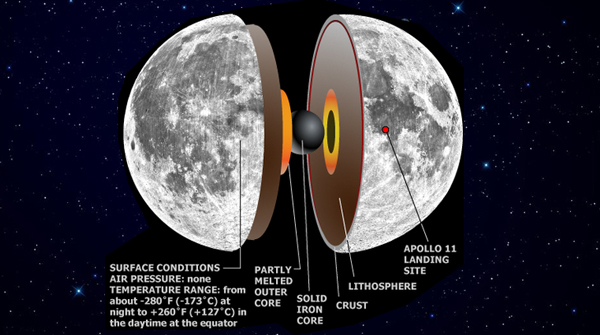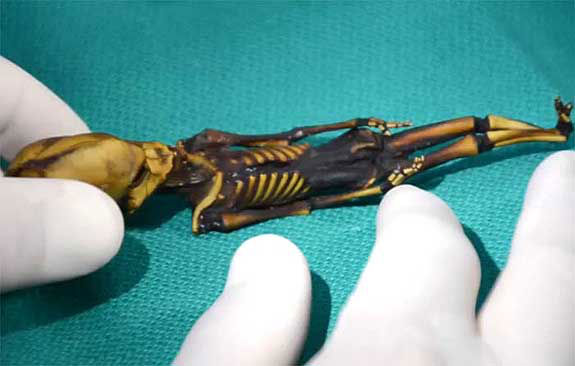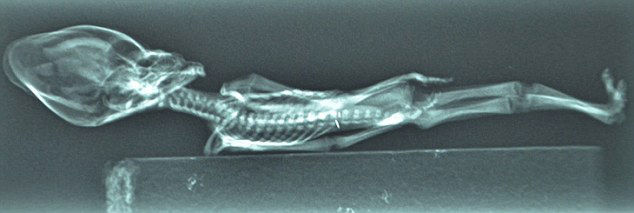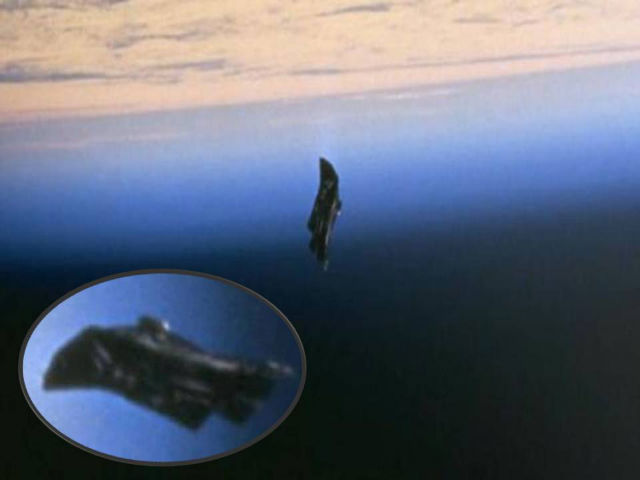Magdy's blog

Ggeologist Vadim Kolpakov set off on an expedition in 1949 to Siberia, leading to the discovery of the Patomskiy crater. Kolpakov went deep into almost uncharted territory, the local Yakut people warned him not to go on, explaining that there was an evil place. It was called the “Fire Eagle Nest” and claimed that people would start to feel unwell near it—and some would simply disappear without a trace.
Kolpakov being a scientist was challenged by these stories. He discovered a giant crater, the size of “a 25-story building,” reared up out of the trees. Up close it resembled a volcano mouth, but there had been no volcanoes in the area for at least a few million years. Kolpakov estimated it as around 250 years old, a figure supported by later studies of nearby tree growth. Interestingly, the trees also seemed to have undergone a period of accelerated growth similar to that seen in the forests around Chernobyl.
Kolpakov, and other people have suggested that it might have been formed by a meteorite, although the crater does not resemble any other known meteorite site. Others are convinced that it was indeed a volcano. Many even think that there is a UFO hidden underneath the crater.
In 2005, an expedition was launched in the hopes of finding some answers—but then tragedy struck. The leader of the expedition died of a heart attack just a few kilometers away from the site. The locals were convinced it was the “evil” crater that led to his death.
Cassini-Huygens mission, flying by the moon in 2004 shoes that the surface is dynamic not a static kind.
The photos below shows that the size and shape of what is called " the magic islands" changes, it is located in the moon's second largest hydrocarbon sea "Ligeia Mare" 130,000 sq km
The photos belwo shows the area of 500 sq km evolution during 8 years
The brightening, they think, is due to waves on the lake's surface reflecting radar back, like a mirror tilted on just the right angle.
Other theories are changes in the solids floating on or just below the lake's surface, reflecting or absorbing the radar as its bounced off the moon.
 Changes in the 'magic island', a feature in a hydrocarbon sea on Saturn's moon Titan, is likely caused by waves, scientists think. – NASA/JPL-Caltech/ASI/Cornell
Changes in the 'magic island', a feature in a hydrocarbon sea on Saturn's moon Titan, is likely caused by waves, scientists think. – NASA/JPL-Caltech/ASI/Cornell

The discoverers have some theories for why they found this extremely distant star hub. The hydrogen reionization in its era may have been patchy, making it feasible to spot some galaxies but not others. Also, EGS8p7 may have been populated by exceptionally hot stars that created a giant hydrogen bubble and broadcast the galaxy's presence. Whatever factors led to this rare sighting, it's clear that humanity's understanding of the oldest galaxies still needs some fine-tuning.
[Image credits: NASA/ESA/R. Ellis (Caltech)/HUDF 2012 Team, Flickr (top); I. Labbé (Leiden University)/NASA/ESA/JPL-Caltech (bottom)]


Odd X-ray pulses are streaming from the core of the Andromeda and Perseus galaxies. And the signals’ spectrum (or light signature) does not match any known particle or atom. So astronomers are tentatively salivating over the prospect of a scientific breakthrough, as this phenomenon could just be the first tangible sign of dark matter.
Dark matter—the elusive, invisible bulk that accounts for most of the mass in the universe—might be composed of sterile neutrinos, which may or may not exist depending on whom you ask. These theorized particles supposedly produce X-rays in their death throes, and such emissions could account for the unexplained surges from the center of the aforementioned galaxies.
Furthermore, since the radiation emanates from the cores of the galaxies, it corresponds to areas of highly concentrated dark matter clumps. So while nothing is certain yet, this could be a momentous discovery that would greatly increase our understanding of a long-standing universal mystery.

Hubble has revealed yet another incredible curiosity—an asteroid that thinks it’s a comet. While the latter bodies are easily recognized by their bright, streaming tails, asteroids do not usually have such features since they possess little ice and are made mostly of heavier elements and rock. So spotting an asteroid with not one but six tails was an incredible surprise.
Asteroid P/2013 P5 is a unique find with its six spouting jets, as all other pieces of cosmic debris are quite content with considerably fewer. It blasts material indiscriminately into space like a cosmic lawn sprinkler
It’s unclear why the object behaves and looks the way it does. One awesomely destructive possibility is that P5 is rotating so quickly that it’s inadvertently killing itself. Its tiny gravity is no match for the greater rotational forces ripping it apart. And radiation pressure from solar emissions stretches the scattering debris into dazzling, comet-like appendages.
However, astronomers do know that P5 is a leftover chunk from a previous impact. The tails most likely contain zero ice content, since frozen water is unlikely to be found in an object that’s been previously exploded to 800 degrees Celsius (1,500 °F).
8 HD 106906b, The Distant Monster
Planet HD 106906b is a head-scratcher. This super-monster is 11 times more massive than Jupiter, and its gaping orbit highlights all sorts of flaws in our tenuous understanding of planetary formation. HD’s distance from its parent star is an absolutely mind-boggling 650 astronomical units (AU).
The incredibly lonely Neptune, our most distant planet, lumbers around the Sun at a distance of 30 AU. This is already an amazing range, but HD is so far separated from its parent that Neptune and the Sun are comparatively within hugging distance. This huge discrepancy is responsible for the addition of many asterisks above our planetary formation theories, as astronomers scramble to explain HD’s existence in spite of its vast orbit and heft.
For example, the forces responsible for making planets are usually undone by such great distances, raising the possibility that HD was created via the collapse of a debris ring. Yet HD is too massive for that to happen. And the primordial disks of raw matter that can birth planets simply do not contain enough stuff to produce giants like HD.
Another possibility is that we’ve discovered a failed binary star system, wherein HD failed to attract enough material to ignite fusion within its gassy bosom. However, the mass ratio between potential binaries is usually no more than 10:1. In HD’s case, however, we’re looking at a 100:1 disparity.
9 Uranus Is Stormy
Photo credit: Imke de Pater/UC Berkeley
Astronomers have been caught completely off guard by Uranus. The second-farthest member of our solar family is typically frigidly calm, but for some odd reason, the planet is currently awash in raging storms.
Dazzling Uranian tempests were expected back in 2007, during its equinox as the planet completed half of its 82-year orbit, and the full solar fury was unleashed directly upon the equator. Yet the stormy weather was supposed to abate as Uranus continued its journey around the Sun. It hasn’t.
With no internal heat source, the green giant relies on solar exposure to fuel its storms. But astronomers from the University of Berkeley, California recently observed major activity in the planet’s upper region, a vast layer of frozen methane. Some of these storms are close to the size of Earth, spiraling through the planet’s atmosphere for thousands of miles and shining so intensely that even amateur astronomers can spot large patches of light across the surface.
It’s unclear how the storms managed to stay healthy without the Sun’s assistance. The northern hemisphere has plunged into shadow yet still continues to host violent storm fronts. However, it’s possible that vortexes deeper within the planet are caused by similar processes to those observed on the much more tumultuous Jupiter.
10 KIC 2856960, The Triple-Star System
Photo credit: M. Kornmesse/ESO
The Kepler Space Observatory is usually busy hunting down new planets, but it spent four years of its life tracking three gravitationally bound stars collectively known as KIC 2856960. KIC was just a run-of-the-mill triplet, two little dwarf stars orbited by a third stellar body going stag. Nothing weird so far, just three stars.
For example, Kepler saw four daily dips in the light curve as the binary dwarfs crossed each other every six hours. It also saw another slight decline in the observed light every 204 days caused by the eclipsing third star.
You’d think four years’ worth of observation would be enough to get well acquainted with KIC. And so did astronomers. But after fiddling with the numbers, the data didn’t make sense in the context of the observed behaviors of the stars. Their first job was to pin down the stellar masses. But no matter how they crunched the numbers, they failed to produce any sensible answers, even though ascertaining the mass of the stars should have been relatively straightforward.
For now, the stellar threesome has astronomers stumped. There is a potential answer that makes sense numerically yet not logically. It’s so farfetched to be almost unthinkable. The KIC system might contain a hidden fourth star. However, its orbit would have to perfectly mimic the orbit of the third star, giving the illusion of a single object.
Source:
http://listverse.com/2015/01/05/10-recent-space-discoveries-no-one-can-explain/
 Photo credit: Mark A. Wieczorek
Photo credit: Mark A. Wieczorek
Some Moon rocks brought by Apollo's teams were magnetic in nature, that means that the moon had it's own magnetic field (once upon a time) not like now, deprived of magnetic field.
A Magnetic field is generated by the what’s called a dynamo, which is caused by the fluid motion of a conducting material, such as liquid iron. In the case of the Earth’s magnetic field, this motion occurs in the planet’s outer core, and is caused by the convection of heat.

But the moon isn’t large enough for convection to take place.
the moon’s solid-rock middle layer, called its mantle, stirs up its liquid iron core. The researchers think this happens because the moon’s core and its mantle rotate around slightly different axes, and the boundary between them is not quite spherical, so their relative motion causes the fluid to mix around.
The strength of this stirring is determined by the angle between the core and the mantle, and the distance between the Earth and the moon, because the tidal gravitational tug from the Earth causes the moon’s mantle to rotate differently than the coreThis model would explain why the moon used to have a magnetic field, but no longer does. That’s because the angle between the mantle and the core has narrowed over time, while the distance between the moon and the Earth has widened, causing the tidal forces to steadily decrease. While these forces used to be enough to generate a dynamo inside the moon, they aren’t anymore.
Based on their calculations, the researchers estimate the lunar magnetic field might have lasted for about a billion years, somewhere between around 2.7 billion and 4.2 billion years ago.
“The further out the moon moves, the slower the stirring, and at a certain point the lunar dynamo shuts off,”
Source: https://sservi.nasa.gov/articles/mystery-moons-lost-magnetism-explained/
2 Galaxies 13 Billion Years Old

The early universe was an approximation of hell—a roiling, opaquely dense stew of electrons and protons. Almost half a billion years passed before the baby universe cooled down enough to allow the formation of neutrons. Shortly thereafter, the universal landscape settled further so that stars and galaxies could come into being.
A recent ultra-deep survey by the Subaru telescope—located in Hawaii and run by the National Astronomical Observatory of Japan—revealed seven of the earliest galaxies ever. Over 13 billion light-years distant, they appeared as unimaginably faint pinpricks of light. In fact, they were visible only after Subaru focused on a tiny patch of sky for over 100 hours of exposure.
Born only 700 million years after the big bang exploded everything into existence, these galaxies are among the earliest things ever observed and are among the first evidence of organization within the universe. These types of galaxies are characterized by intense hydrogen excitation and an absence of heavier elements since metals (other than minute amounts of lithium) hadn’t been blasted into existence yet by supernovae.
Termed Lyman-alpha emitters (LAE), these galaxies appeared suddenly and for (more or less) unknown reasons. LAE galaxies are prolific star-producers, and their extreme age offers insight into the evolution of the universe. However, astronomers aren’t sure if the ones captured by Subaru were newly formed or if they’d been present and were only made visible by a thinning of the cosmic gas that initially obscured them.
http://listverse.com/2015/01/05/10-recent-space-discoveries-no-one-can-explain/

Saturn’s largest moon, Titan, might be the most intriguing member of the solar system. It’s a primeval Earth, complete with an atmosphere, liquid bodies, and even suggestions of geological activity.
In 2013, the orbiting Cassini spacecraft spotted a brand new chunk of land that mysteriously appeared out of Titan’s second-largest sea, Ligeria Mare. Shortly thereafter, the “Magic Island” disappeared just as mysteriously into the translucent, –200 degree Celsius (–290 °F) methane-ethane sea. And then it reappeared again as a much larger landmass during one of Cassini’s recent radar sweeps of Titan.
The transient land confirms the supposition that Titan’s alien oceans and seas are dynamic components of an active environment, rather than static features. However, astronomers are at a loss to explain the physical processes responsible for the ephemeral landmass. Especially since it appears to have doubled in size—from 50 to 100 kilometers (30 to 60 mi) across—since it reappeared.
4 The Asteroid With Rings
All our gas giants are encircled by rings, though most of these are tenuous wisps of debris quite unlike Saturn’s massive sets of bling. And now, for the first time and quite unexpectedly, astronomers have found rings around a much smaller body. Meet Chariklo, an asteroid measuring only 250 kilometers (155 mi) across yet boasting its own ring system.
Chariklo, though the largest object in its cosmic vicinity, looked like an unremarkable chunk of space rock. Then astronomers noticed its anomalous light signature. As it eclipsed a faraway star, it caused an unanticipated dip in the amount of light reaching our telescopes. The dimming action occurred immediately before and after it crossed the star’s path, causing momentary confusion.
It turns out that Chariklo sports not one but two cosmic necklaces. Containing a good amount of frozen water, the larger of the rings hugging the planet is 7 kilometers (4 mi) wide, while the smaller is about half that size.
And while some asteroids do have “moons”—tiny satellites dancing around them—Chariklo is unique because a ring around an asteroid had never been observed. The rings’ origin is unclear, though it appears they were formed by an impact. They are either the remnants of a foreign body that shattered itself against Chariklo or pieces of Chariklo itself that blew off during the crash.
5 UV Underproduction
We pride ourselves on ascertaining the many universal balances that seem to occur throughout the cosmos. One such correlation has been observed between ultraviolet light and hydrogen, as the two have been found to coexist in well-defined proportions.
A recent survey, however, has thrown a monkey wrench into these suppositions and reported a severe underproduction of UV photons from known sources—a 400-percent discrepancy compared to predicted values. Lead author Juna Kollmeier likens it to walking into a dazzlingly bright room only to find several dim bulbs responsible for the disproportionate brilliance.
Two accepted processes produce UV radiation—unruly young stars and massive black holes—but more UV radiation exists than could have been produced by the two. Astronomers can’t explain the superfluous UV production and are forced to admit that “at least one thing we thought we knew about the present-day universe isn’t true.” That’s quite disheartening, considering that UV-hydrogen balance was believed to be very well understood. As in many times in the past, astronomers are forced back to the drawing board.
Quite mysteriously, this UV underproduction is only apparent at local distances. When looking farther off into space and time, astronomers find that their predictions hold up quite well. They’re remaining optimistic, though, since the unaccounted radiation could be the result of exotic, heretofore undiscovered processes. These possibly even involve dark matter decay.
Source:http://listverse.com/2015/01/05/10-recent-space-discoveries-no-one-can-explain/
 Image source
Image sourceHard teeth, bulging head, and scaled skin made most think this was something extraterrestrial. Only after it was declared human, did the question arise for an explanation for it’s size, mutations, and origin. None of those answers were ever found.
You can read more here: Skeleton Of ‘Alien Looking’ Tiny Creature with Nine Ribs Which Was Discovered Was Actually A Human, Reveal Scientists


 Image source
Image sourceLady Dais of the Han Dynasty, is China’s eternal mummy. Her skin was still soft, and her arms and legs could flex at the joints, and remains to this day, the most well-preserved ancient human ever discovered.
Source:http://www.ancient-origins.net/ancient-places-asia/enduring-mystery-lady-dai-mummy-001357
3. Two men arrived at a sheriffs office claimed to be abducted by aliens with lobster-claw hands (1973). image source: www.twincities.com
image source: www.twincities.comCharles Hickson and Calvin Parker were fishing when they said they were taken. They talked in distressed voices about the abduction, told the same story (even though they were in different rooms), and Hickson even passed a polygraph exam.
Source: https://en.wikipedia.org/wiki/Pascagoula_Abduction
4. “The Black Knight Satellite” whose origin and purpose were unknown, was spotted before any man-made satellites were invented. Image source: www.abovetopsecret.com
Image source: www.abovetopsecret.comIn 1954, a retired air force major reported that the U.S Air Force spotted two satellites orbiting Earth. Some claim this black knight satellite may 13,000 years old, and has been both sighted and photographed.
Source: https://en.wikipedia.org/wiki/Black_Knight_satellite
5. A Boeing 727 was stolen in 2003 from an Angolan airport even though the suspected thieves were believed to have no abilities to fly an aircraft. Image source: www.airspacemag.com
Image source: www.airspacemag.comThe plane took off without any communication or clearance from the tower. With the lights off, and transponder disabled, it flew above the Atlantic Ocean never to be seen of again.
Source: http://www.theweek.co.uk/mh370/57683/the-mystery-of-mh370-egyptair-flight-ms804-and-seven-other-planes-that-vanished
6. The Kepler telescope has spotted roughly 1,200 possible worlds, including 68 that are earth sized planets. Image source: deviantart.net
Image source: deviantart.net1 out of every 37 to 1 out of every 70 sun-like stars may harbor an alien earth. These findings alone can hint to billions of planets in our galaxy that could harbor life.
Source: http://www.space.com/11188-alien-earths-planets-sun-stars.html
7. There is a 240 paged book called The Voynich Manuscript, it was said to be written in the early 15th century in a language completely unknown. Image source: Beinecke Rare Book & Manuscript Library, Yale University
Image source: Beinecke Rare Book & Manuscript Library, Yale UniversityThe illustrations point to the possibility that the book is a medieval or early modern book of medicine. The Voynich manuscript has been studied by many professional cryptographers, yet no one has succeeded in deciphering the text.
Source: https://en.wikipedia.org/wiki/Voynich_manuscript
8. A man spent 67 years of his life stereoblind, which is the inability to experience depth perception. Only after having to pay for 3D glasses to watch the movie Hugo, that his brain suddenly clicked. Image source: www.bbc.com
Image source: www.bbc.comAbout 5-10% of the population who have stereoblindness see the world as if it was a background image. He was able to experience three dimensional vision long after the movie ended even though conventional wisdom stated that it is impossible.
Source: http://www.bbc.com/future/story/20120719-awoken-from-a-2d-world
9. In 1975 odd and anxious behaviors of dogs and other animals led to the evacuation of a city who, hours later, experienced a 7.3 magnitude earthquake. Image source: www.earthmagazine.org
Image source: www.earthmagazine.orgIn the Chinese city of Haicheng, these observations led to an order for 90,000 residents to evacuate the city. Only a few hours afterward, a 7.3 magnitude earthquake destroyed nearly 90% of the city.
Source: https://www.psychologytoday.com/blog/canine-corner/201205/can-dogs-predict-earthquakes
10. The world’s largest virus, named Pandora, was found off the coast of Australia, it also holds about 93% of unidentified genetics. Image source: www.labrujulaverde.com
Image source: www.labrujulaverde.comThis suggests an “extraterrestrial” origin, and they cannot say without absolute certainty that it does not pose a danger to human kind.
Source: http://www.spacedaily.com/reports/Pandora_virus_covert_threat_from_space_999.html
Source:
http://www.unbelievable-facts.com/2015/04/mysterious-facts.html/3
عثر علماء الآثار الإسبان على مومياء قديمة عمرها آلاف السنين وهي في حالة جيدة جدا بالقرب من الأقصر في مصر، وفقا لوزارة الآثار.
وصدر تقرير يقول إن المومياء كانت موجودة في قبر وربما يرجع تاريخها إلى الفترة بين عامي 664-1075 قبل الميلاد، وذلك على الضفة الغربية لنهر النيل على بعد 700 كم جنوبي القاهرة.
وكانت المومياء في تابوت خشبي ملون بألوان زاهية، وقد دفنت بالقرب من معبد يعود لعصر الألفية الرابعة للمحارب الملك تحتمس الثالث.
وقالت وزارة الآثار إن التابوت ينتمي على الأرجح إلى أحد النبلاء واسمه (Amenrenef) وكان خادما من الأسرة المالكة. كما قالت قائدة فريق البحث، ميريام سيكو ألفاريز: "لقد زُينت المومياء بالعديد من الزخارف الملونة المشيرة إلى رموز دينية من مصر القديمة، مثل الإلهة إيزيس وأبناء حورس الأربعة".

ويشير أحدث دليل على تحنيط المومياء إلى أن اعتماد لف الجثث للحفاظ عليها بعد الوفاة يعود إلى نحو 4500 قبل الميلاد. ويذكر أن الملك تحتمس الثالث (ويسمى أحيانا أعظم فاتح في مصر أو "نابليون مصر")، هو الفرعون السادس من الأسرة الـ 18.

وقد بنى تحتمس الثالث أكثر من 50 معبدا بالإضافة إلى العديد من المقابر للنبلاء، بُنيت بقدر من الحرفية أعلى من أي وقت مضى. واكتُشف قبره من قبل فيكتور لوريت في عام 1898 في وادي الملوك.

وتقع الأقصر على ضفاف نهر النيل ويوجد فيها نحو نصف مليون شخص، وتتميز بوجود العديد من المعابد والمقابر التي بناها الفراعنة في مصر، كما تعتبر موقعا رئيسيا لقطاع السياحة في مصر.

وبدأ مشروع التنقيب والترميم لمعبد تحتمس الثالث الذي يعود لملايين السنين (حيث عُثر على هذا القبر) في عام 2008، وهكان هذا نتيجة التعاون بين وزارة الآثار المصرية وأكاديمية الفنون الجميلة "سانتا إيزابيل".
المصدر: ديلي ميل
ديمة حنا
source: arabic.rt.com
Canada has become an attractive pole for immigrants from around the world who are looking for a host country that will give them good opportunities. According to the Organization for Economic Co-operation and Development, Canada’s annual immigration flow is now proportionately one of the highest among OECD members, at 0.7 per cent of its population.
In 2011, there were 249,000 new permanent residents, after a record year of 281,000 in 2010. (The official planned admission range is between 240,000 and 265,000 new permanent residents a year.) That is not counting the 190,800 temporary foreign workers that were admitted in 2011 as well as the 98,400 foreign students who came to benefit from our universities and may decide to stay and put their skills to use in Canada’s industries.
There are many myths floating around about immigrants, ranging from them being low-skilled workers to them having difficulty integrating into the labour force. A quick read through the OECD’s 2013 International Migration Outlook debunks all of those myths – and makes the reader realize just how well Canada is faring on the immigration front.
Canada’s strong economic performance since 2008 is explained by many factors, including well-capitalized banks, massive public infrastructure spending – and a strong influx of immigrants. Immigration last year explained two-thirds of Canada’s population growth of 1.2 per cent, well ahead of the 0.7 per cent and 0.3 per cent seen in the United States and the euro zone, respectively.
Why is this so important? Because without this immigration flow, Canada’s population aged between 20 and 44 years old would be declining. That cohort, which constitutes most of the labour force, is the one that creates new households, buys new houses, has children and pays the greater part of taxation revenue. Without immigration, Canada’s natural population growth would not be enough to sustain economic growth and welfare. Quebec, given its demographic structure, especially needs immigration to increase its labour force in the short term so as to sustain the costs of its social programs.
We also note that a large percentage of every province’s immigrants are in the 20-to-44 age group, meaning that the benefits of household formation are spread all across Canada. This helps explain why the housing market in Canada has been so resilient during the past five years.
I am happy to see that one of Canada’s strengths is clearly working in its favour. As Canadians, we need foreign talent to sustain the country’s demographic and economic growth, and we have just the labour market to attract it. Canadians need immigration just as much as immigrants need a destination such as Canada. Immigration, as it turns out, is most likely the key to Canada’s prosperity.
Source: www.theglobeandmail.com
Discrimination is real
One(no name mentioned or privacy) is at a senior position at a top educational institution in Saskatchewan. He is currently pursuing his PhD, is happily married and is a Canadian citizen. Yet, the 40-year-old Pakistani-born immigrant is all set to leave Canada for good in 2013.
There is a study that shows that 40% of immigrants who entered Canada in the skilled worker or business class left Canada within their first 10 years.
A previous study by Statistics Canada indicated that one-third of male immigrants (aged 25 to 45 at the time of landing) left Canada within 20 years after arrival. More than half of those who left did so within the first year of arrival.
“I feel like my career is going nowhere. I am overqualified for the position that I have currently,” sMost people says
Someone else claims that his work has been constantly nitpicked, he was stared at during meetings (which in his words comprised of all “white folks”) and on one occasion was completely sidelined when his boss was on leave. “I hold the second most senior position in my organization, but I don’t think I will ever be made director here. They [the management] completely ignored the fact that I was supposed to be made acting director,” he says. He, who was on a committee of the British Columbia Human Resources Management Association (BCHRMA), says that what he heard at a committee hearing about hiring immigrants in Canada shocked him. “Major Canadian multinationals in B.C. are on record saying that immigrants cannot express themselves well in interviews and therefore it is difficult to consider them for senior positions. I found that ridiculous. There are plenty of well-educated professionals who come to Canada, even get themselves accredited to suit Canadian standards and yet fail to reach their full potential because of the discriminatory attitude of employers. I don’t think I can tolerate such behaviour anymore,” he says. Mir admits that he will miss the pristine beauty of Canada and the clean air, but it is a very small price to pay when it comes to being professionally satisfied.
Canadian experience matters!!!!!!!!!!!!!!
Someone else who lived in scenic Washington State in the United States. But his daughter’s educational prospects prompted the successful marketing professional to move bag and baggage to Vancouver in 2004. Though he was employed immediately, something was missing. “The salaries in Canada are abysmal. I do not mean to compare, but the difference in compensation is just too much. In Switzerland I was being paid about $350 an hour, and in Canada I started at $20 an hour. It is not about the amount, but a huge blow to one’s self-confidence,” he says. This was due to his lack of Canadian experience !!!!!!!!!!
But he did not give up and applied everywhere for a better position with better wages. He tried enlisting the support of a mentor through an immigration support program in Victoria and also applied for government positions. “I applied for quite a few jobs, and got a total of two interviews. Two! With both positions I came in second; in one position they clearly preferred a Canadian with more Canadian experience and they even told me to my face: ‘She [the winning candidate] knows someone at the Globe and Mail.’ I did not stand a chance, did I?” he says.
Besides his claim that the skilled worker program is misleading, the other form of bias that he feels is rampant is age discrimination. He has been told that he was not in the preferred age group for a particular job, despite his experience. Add to that the constant rejections due to his educational credentials and he had had enough. He is leaving Canada for good this spring.
source: www.canadianimmigrant.ca
where do you imagine yourself 5 years from now? silly... no one knows for sure, actually no one knows if your company will even exist!
What will you bring to our company? another silly questions; you advertised and I applied that simple looking for better chances
2- You send a resume and no answer, mostly they are having an internal hire that they are favoring or just collecting data for future use or perhaps it is a fake job opportunity
3- You arrive in time and they come late; simply because they are the one who will not get the blame
4- They talk too much and give you questions with YES/NO answers just to fill in the spaces. Again they are favoring someone else
5- They quickly finish the interview and ask simple questions again just to fill in the spaces because they are favoring internal hiring
6- They do other things while they are interviewing you
7- No feedback, they just dump you and they do not even care to send you an email that will cost them nothing telling you that they wish you a better chance
8- Silly picky; they favor someone just because they have experience 21 years instead of 20; or perhaps if these fine people, I can even get better than them or perhaps with less money
9- Bad attitude; like they do not look to you while they are speaking or asking questions
10- They give false or misleading reasons for not selecting you, like you did not answer all questions; you did not understand the questions
